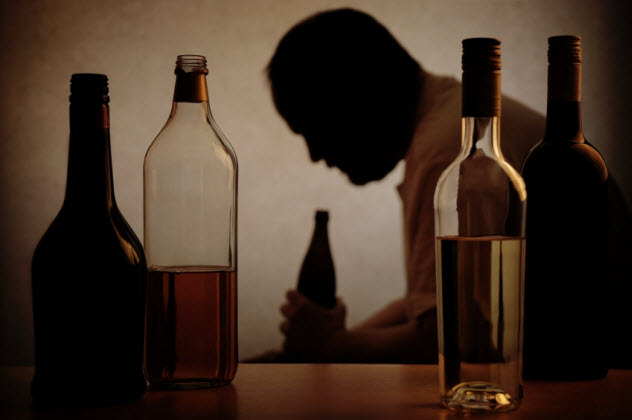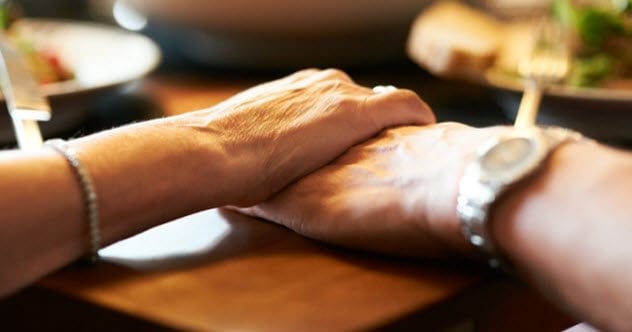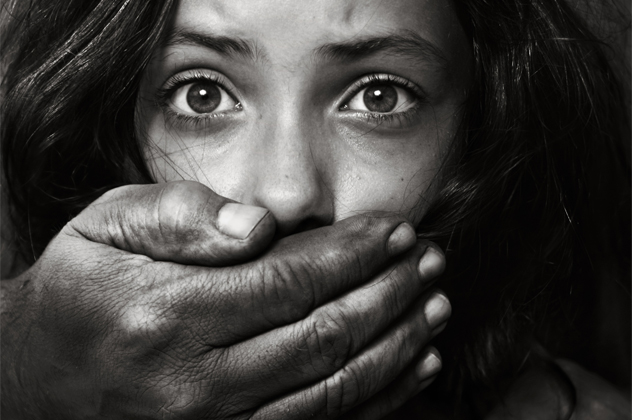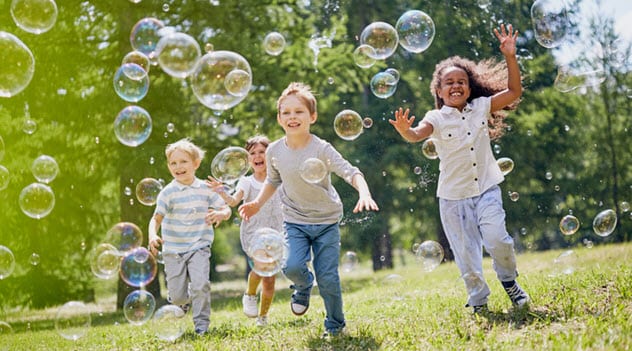 Misconceptions
Misconceptions  Misconceptions
Misconceptions  History
History 10 Amazing Roman Epitaphs
 Weird Stuff
Weird Stuff 10 Niche Subcultures That Are More Popular Than You Might Think
 Mysteries
Mysteries 10 Tragic Disappearances and Deaths in Joshua Tree National Park
 History
History 10 Ways Childhood Really Sucked in the Old West
 Music
Music 10 Name Origins of Famous Bands from the 1990s
 Religion
Religion 10 Biggest Turnarounds by the Catholic Church
 Weird Stuff
Weird Stuff 10 Unbelievable Times Laws Had Unintended Consequences
 Humans
Humans Ten Historic Women Who Deserve Way More Credit Than They Got
 Movies and TV
Movies and TV 10 Films That Spawned Major Lawsuits
 Misconceptions
Misconceptions 10 Phony Myths and Urban Legends That Just Won’t Die
 History
History 10 Amazing Roman Epitaphs
 Weird Stuff
Weird Stuff 10 Niche Subcultures That Are More Popular Than You Might Think
Who's Behind Listverse?

Jamie Frater
Head Editor
Jamie founded Listverse due to an insatiable desire to share fascinating, obscure, and bizarre facts. He has been a guest speaker on numerous national radio and television stations and is a five time published author.
More About Us Mysteries
Mysteries 10 Tragic Disappearances and Deaths in Joshua Tree National Park
 History
History 10 Ways Childhood Really Sucked in the Old West
 Music
Music 10 Name Origins of Famous Bands from the 1990s
 Religion
Religion 10 Biggest Turnarounds by the Catholic Church
 Weird Stuff
Weird Stuff 10 Unbelievable Times Laws Had Unintended Consequences
 Humans
Humans Ten Historic Women Who Deserve Way More Credit Than They Got
 Movies and TV
Movies and TV 10 Films That Spawned Major Lawsuits
Top 10 Unexpected Societal Issues From Covid-19
We are all aware of the toilet paper shortage, loss of smell symptoms, mask requirements, and social distancing rules that came with COVID-19. These are some common side effects of the pandemic. However, did you know the virus brought additional unexpected consequences beyond its deadly symptoms? We’ve put together ten issues that our society didn’t see coming.
Top 10 Funny Coronavirus Lockdown Activities Around The World
10 Excess Suicidal Thoughts and Deaths

The transition from life as we knew it to quarantine in the first half of 2020 led to serious mental health issues. While studies report no overall increase in suicide rates, this is not true for specific countries or demographics. People have also claimed increased thoughts of suicide. The Centers for Disease Control and Prevention (CDC) released a report surveying 5,412 American adults from June 24 to 30th in 2020. The results? Participants reported elevated suicidal ideations. Researchers found males were more suicidal than females, employed more suicidal than unemployed, and essential workers with higher suicidal ideations than nonessential workers.
Actual suicide deaths have increased in non-white Americans compared to whites. A study released in January 2021 found that while mortality rates in Connecticut decreased overall, the percentage of deaths from racial minority groups had increased. A different study analyzing data from 21 countries found that Vienna, Japan, and Puerto Rico showed statistical evidence of increased suicides in 2020. A February 2021 study of suicide rates in Japan between October 2009 to November 2020 found increased suicide during the pandemic. There were significant excess deaths from suicide between Japanese females and males between July and November 2020. So, despite certain sources, COVID-19 has caused suicidal consequences in society.
9 Abundance of Porch Pirates

The panic purchase from COVID-19 and increased consumers shopping online has unexpectedly led to increased porch pirates. The term porch pirate has been used since the early 2010s and refers to thieves stealing packages from people’s porches. At the end of 2020, Amazon announced a 72 percent more cash flow than in 2019. That is a lot of packages people ordered during the pandemic.
In America, a research study comparing package thefts in 2019 and 2020 reported a 7 percent increase from 36 percent to 43 percent of packages stolen. For more detailed porch pirate statistics, 35.5 million Americans reported they had a package stolen in 2020, resulting in a value of approximately 5.4 billion dollars. Of these people, 36 percent said they had packages stolen more than once.
8 Over-Drinking Into Alcoholism

Stuck at home, isolated, and worried about the pandemic effects can easily lead to picking up the bottle and drinking your worries away. Some people also believed that alcohol prevents COVID-19. This assumption is not true. The National Institute on Alcohol Abuse and Alcoholism (NIAA) had to release an announcement on May 12, 2020, to remind people, “Drinking alcohol does not prevent or treat coronavirus infection.” Although a hand-sanitizer contains alcohol and a glass of wine can ease some stress, drinking too much alcohol can make your immune system weaker against COVID-19.
Research on 1,540 adults ages 30 to 59 years studied the change in alcohol consumption in 2019 and 2020. The data from 2019 was from April 29 to June 9, and the 2020 data from May 28 to June 16. The results found that overall alcohol consumption increased during COVID-19 by 10 percent. However, women consumed more alcohol by 41 percent more. Women also experienced a 39 percent increase in adverse consequences associated with alcohol. These rising drinking patterns can be a potential sign of alcohol abuse and addiction.
7 Managers With Trust Issues
Since 1999 when the internet allowed companies to contract remote workers, managers have reported they had difficulty trusting remote employees. Questions like, are they working the hours they record were common. So with COVID-19 forcing a majority of workers globally to work-from-home, managers are suddenly finding themselves untrained to manage remotely as well.
The Harvard Business Review (HBR) surveyed 215 supervisors and managers in 2020 to see how they handled remote employees. The results indicated most were struggling and disliked the experience. For example:
* 40 percent expressed low self-confidence in their ability to manage workers remotely
* 38 percent said remote workers usually perform worse than those who work in an office
* 41 percent were skeptical whether remote workers can stay motivated in the long term
6 Spread of Touch Deprivation

Yes, touch deprivation, also known as touch starvation, is an actual health condition. Physical contact is important for humans in multiple ways, and isolation combined with social distancing has prevented people from receiving the touch they need. Human touch can decrease anxiety, expand trust, and improve your health by improving your immunity. A study on premenopausal women found that hugs from their partners lowered their blood pressure.
The director of the Touch Research Institute at the University of Miami, Tiffany Field, has linked the absence of touch to anxiety, depression, and lowered immunity. In a different study, she found that 68 percent of participants .felt like they were touch-deprived during the first COVID-19 shutdowns. This number increased by 50 percent within a month.
5 Higher Domestic Violence Rates

We would assume more time at home with your family is an exciting opportunity for quality time. Unfortunately, domestic violence has been coined a pandemic within the COVID-19 pandemic. In addition to the rise of cases, another issue to consider is the inability to seek help during quarantine. People experiencing intimate partner violence (IPV) could not safely call hotlines or visit support centers for services.
An April 2020 report released in The American Journal of Emergency Medicine (AJEM) details some alarming domestic violence trends globally. In the United States, police department statistics provided insight into how COVID-19 contributed to increased DV. For example, police recorded the following data after March 2020, stay-at-home orders:
Portland Police Bureau: 22 percent increase in arrests related to DV
San Antonio Police Department: 18 percent increase in calls regarding family violence
Jefferson County Alabama Sheriff’s Office: 27 percent increase in DV calls
New York City Police Department: 10 percent increase in DV reports
The AJEM report also details that the United Nations (UN) entity UN Women has global statistics of increased DV cases. Examples include the following increasing since the country’s lockdowns in March:
* Argentina: 25 percent of cases
* France: 30 percent of cases
* Singapore: 33 percent of helpline calls
4 More Substance Use and Overdoses

Substance use is up, and so are overdose deaths. In December 2020, a CDC press release explains there were over 81,000 drug overdose deaths in the U.S. from May 2019 to May 2020. The highest recorded overdose deaths over 12 months ever. These reported deaths include:
* 98 percent increase of synthetic opioid-involved deaths in western states
* 26.5 percent increase in deaths involving cocaine
* 34.8 percent increase in deaths involving psychostimulants, such as methamphetamine
A February 2021, Morbidity and Mortality Weekly Report (MMWR) reported increased substance use in April and May 2020. There were 1,004 adult participants and resulted in estimates of 18.2 percent of increased substance use. Additionally, 36.9 percent of Hispanics described increased or newly initiated substance use during the pandemic.
3 Increase In Physician Burnout

With increased patients with severe COVID-19 symptoms in hospitals, we may have expected the limited beds and reliance on healthcare workers. But, how are the physicians treating all these patients doing themselves? Statistics say not so well. COVID-19 increased the workload on physicians and directly led to increased burnout. A Medscape survey released in September 2020 of 7,500 doctors globally highlights just how bad physician burnout has become during the pandemic. Of the total doctors, 5,000 practiced in the United States, and 64 percent of these physicians said the pandemic intensified their sense of burnout. The main reasons for the stress were treating patients likely to die and being exposed to the virus without proper personal protective equipment (PPE). A fifth of physicians in Spain and the U.S. said they ended up catching COVID-19.
Unhappy and over-worked physicians are dangerous society issues. Not only do we rely on physicians to be alert to do their jobs, but if they decide to quit, a lack of healthcare workers can prove fatal for those needing their care. They cannot all take a vacation at the same time, but our physicians need a break.
2 Over-Eating Into Obesity

Not only does severe obesity qualify you as at-risk for COVID-19, but the pandemic is causing people to over-eat as well. Stress or emotional eating is a common phenomenon. Consumption of food can numb out unpleasant feelings. Many people found themselves gaining up to 15 pounds during self-isolation that the term “Quarantine 15” started circulating on social media. Stocking up on food in case of limited supplies and being close to the kitchen pantry at home all day possibly contributed to this.
Did you know that over-eating is also one of the uncommon side effects some people experienced after recovering from the virus? Indian News sources quoted a physician from the Apollo Hospitals in Seshadripuram saying people who lost taste or smell during their COVID-19 illness started binge-eating after recovery. During their 14-day isolation after the illness, people are gaining weight. Dr. Dinesh V Kamath said, “We are seeing many recovered patients in the age group 40-60 years putting on weight. They say they have been overeating.”
1 Kids Can’t Improve Their Immunity

Staying at home and not being exposed to the dirt and pollution outside should make your kids healthier right? Not necessarily. For young kids where their immune system is still developing, over-clean environments can negatively influence them. When kids play outside, and you expose them to allergens, they will be less likely to develop asthma or allergies when they grow up. Quarantine is denying small children this immune-boosting opportunity. However, your older kids’ immunity will not get worse by staying indoors.
Top 10 Tone-Deaf Celebrity Coronavirus Messages That Are Cringey AF
About The Author: Sara enjoys research, art, and seeking a sustainably fun life, balancing physical and mental health. Read more on how she explores, learns, and balances all her interests at www.saramenges.com.








